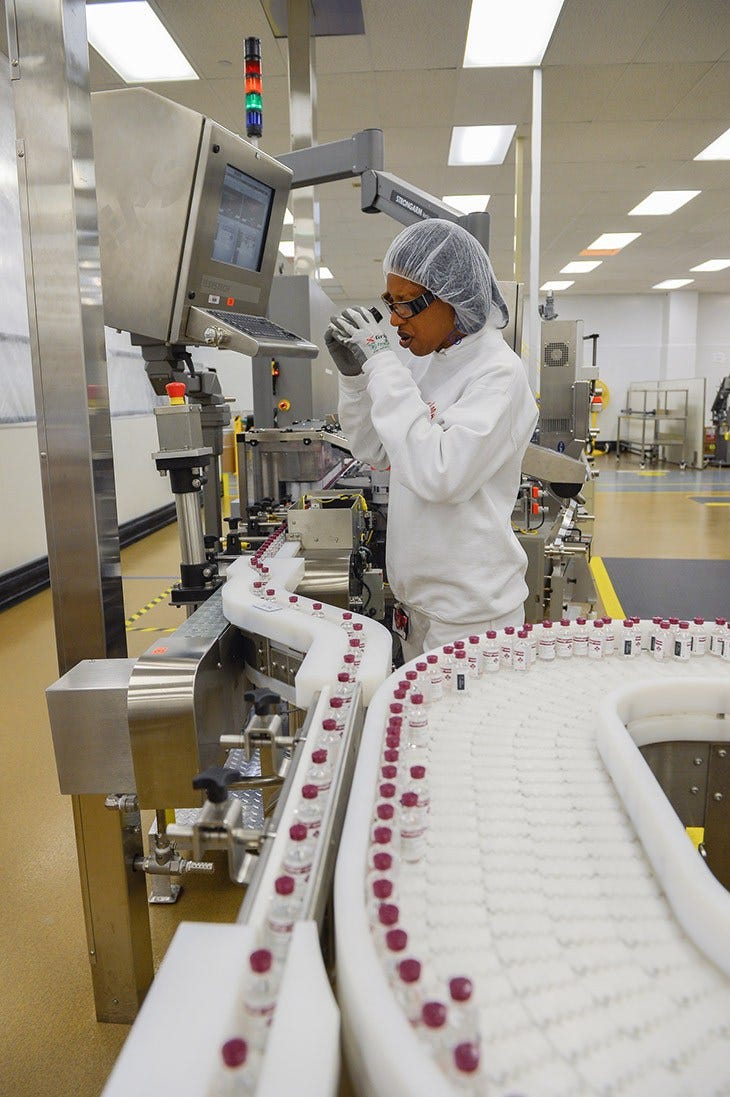Lilly Acquires CoLucid, Bringing Home an Indiana Discovery
 Lilly says it's now producing new drugs “at a rate we haven’t seen." It aims to create as many as 20 new medicines between 2014 and 2023.
Lilly says it's now producing new drugs “at a rate we haven’t seen." It aims to create as many as 20 new medicines between 2014 and 2023.
Subscriber Benefit
As a subscriber you can listen to articles at work, in the car, or while you work out. Subscribe NowIndianapolis-based Eli Lilly and Company believes its new prescription drug to treat serious migraines could be on the market by 2019. The drug, called lasmiditan, has a unique story that shines a spotlight on Indiana’s life sciences sector. Those involved say it’s a tale of grit, a lot of money and a little luck—culminating with a happy ending for CoLucid, the startup that came to life in Indiana and will once again call it home.
Lilly scientists discovered lasmiditan about 12 years ago, but the pharmaceutical giant wasn’t focused on pain management at the time and had other medicines “with greater prospects of treating higher unmet medical needs.” The easiest, and most likely, route for a drug at this point would be to shelve it, simply another victim of the uphill, expensive battle to bring pharmaceuticals to the market. But Indiana’s life sciences sector helped prevent such a dismal fate.
The state’s life sciences initiative, BioCrossroads, was establishing its footing at the same time and led the charge to keep lasmiditan alive.
“[BioCrossroads] put together the Indiana Future Fund, which was an investment vehicle for early-stage life sciences capital in Indiana,” says BioCrossroads President David Johnson. “There wasn’t anything like that before, and it was the first big project for BioCrossroads.”
Several of the venture capital firms participating in the Indiana Future Fund approached Lilly and bought the rights to lasmiditan, forming the startup company CoLucid Pharmaceuticals, Inc. to take on the early-stage risk of developing the potential migraine drug.
“At $16.5 million, it was one of largest venture capital transactions that had ever been done in the state and certainly the largest in the life sciences area,” says Johnson. “Without BioCrossroads and the Indiana Future Fund, there never would’ve been CoLucid.”
CoLucid remained in Indiana until its chief executive officer—a former Lilly executive—died unexpectedly. The new CEO was based in Boston; as result, lasmiditan’s clinical trials took place on the East Coast.
“We never lost track of lasmiditan, even after it left our laboratory,” says Lilly Senior Vice President of Corporate Business Development Darren Carroll. “And in that 12-year period…we began to see pain, in general, become a much more important unmet medical need in the U.S. As a result, Lilly decided over the last five-to-six years to get much more engaged in the development of medicines to treat various kinds of pain.”
Meanwhile, CoLucid was leading lasmiditan through clinical trials with “unbelievably successful” results, says Johnson. Underscoring the colossal cost of drug development, CoLucid went public to raise more capital to finance Phase 3 clinical trials. And in January, Lilly acquired CoLucid for $960 million, bringing its discovery back home for the conclusion of Phase 3 clinical trials and the final push to commercialization.
Carroll believes lasmiditan adds to Lilly’s momentum “after a pretty tough spot.” During a four-year period, patents began to expire on key Lilly products that accounted for as much as 40 percent of the company’s revenues.
“We didn’t have the exact timing right for new medicines coming out of our labs, so we had a bit of a gap between patents expiring and new medicines coming out of our laboratory,” says Carroll. “We really had to hunker down as a company. While we had to be very careful about our expenses, we continued to invest in innovation during that period, and those investments are now paying off.”
Carroll says Lilly is now producing new drugs “at a rate we haven’t seen”; it aims to create as many as 20 new medicines during the 10-year period between 2014 and 2023. With the tally already at seven, Lilly is confident lasmiditan will count toward that goal and mark a full-circle, Hoosier success story.
“That will, in turn, end up employing more people in Indiana and putting more money into the state’s economy; Lilly will be able to grow with a very promising therapeutic product,” says Johnson. “It’s something that would not have happened, had there not been that special pool of money available and some people willing to use that money to take some pretty extraordinary risk. They put in a huge effort to build a company; it was hard to do, but turned out to be really, really worth the effort.”
Carroll says lasmiditan could mark a major step forward for the 36 million Americans who suffer from migraines.
Lilly’s emerging pain management portfolio also includes galcanezumab, which Carroll says will work hand-in-hand with lasmiditan.
Johnson says CoLucid’s story illustrates that innovation requires a lot of time and money.

